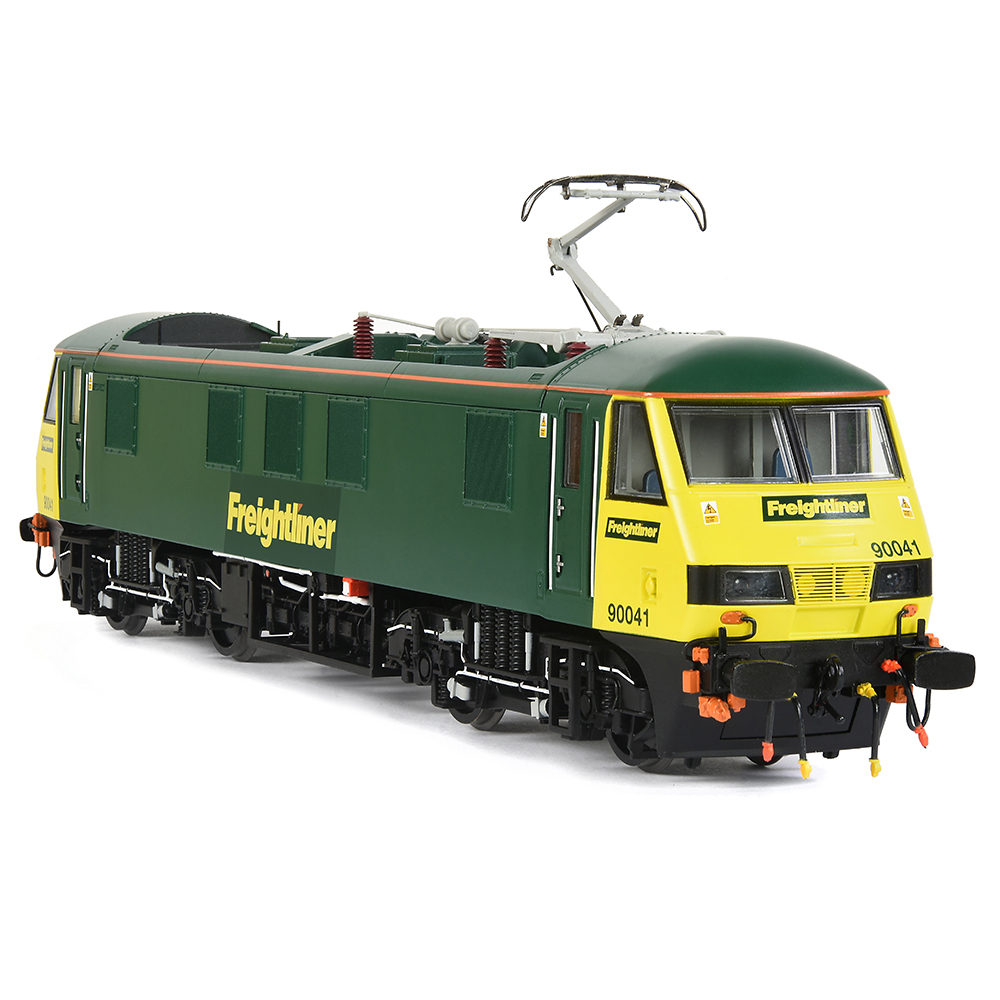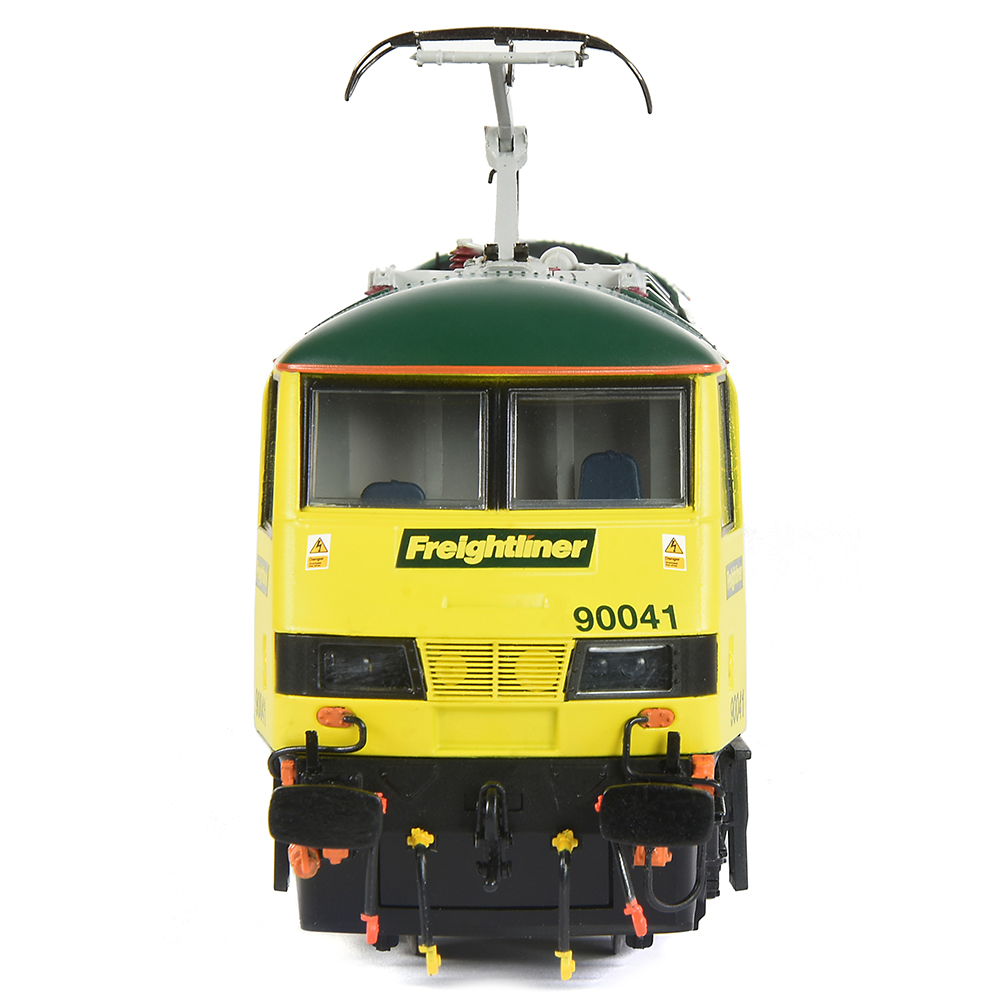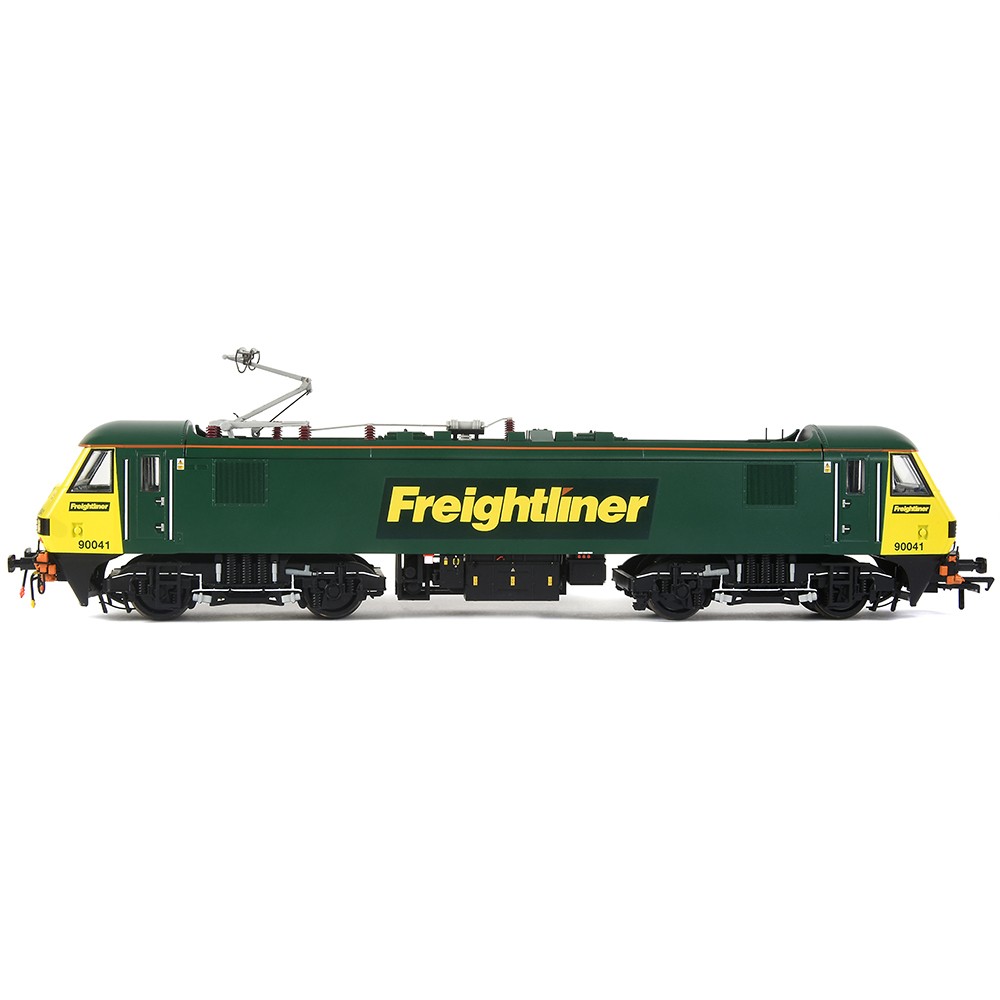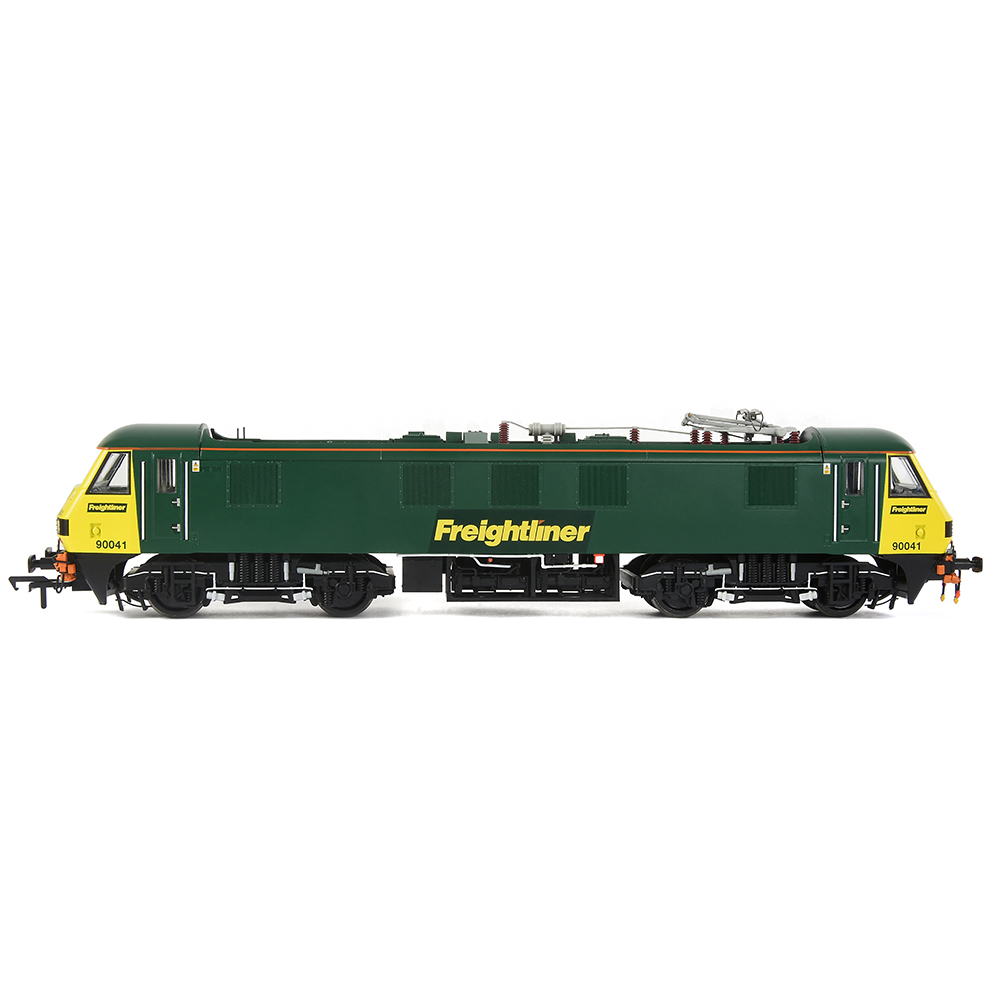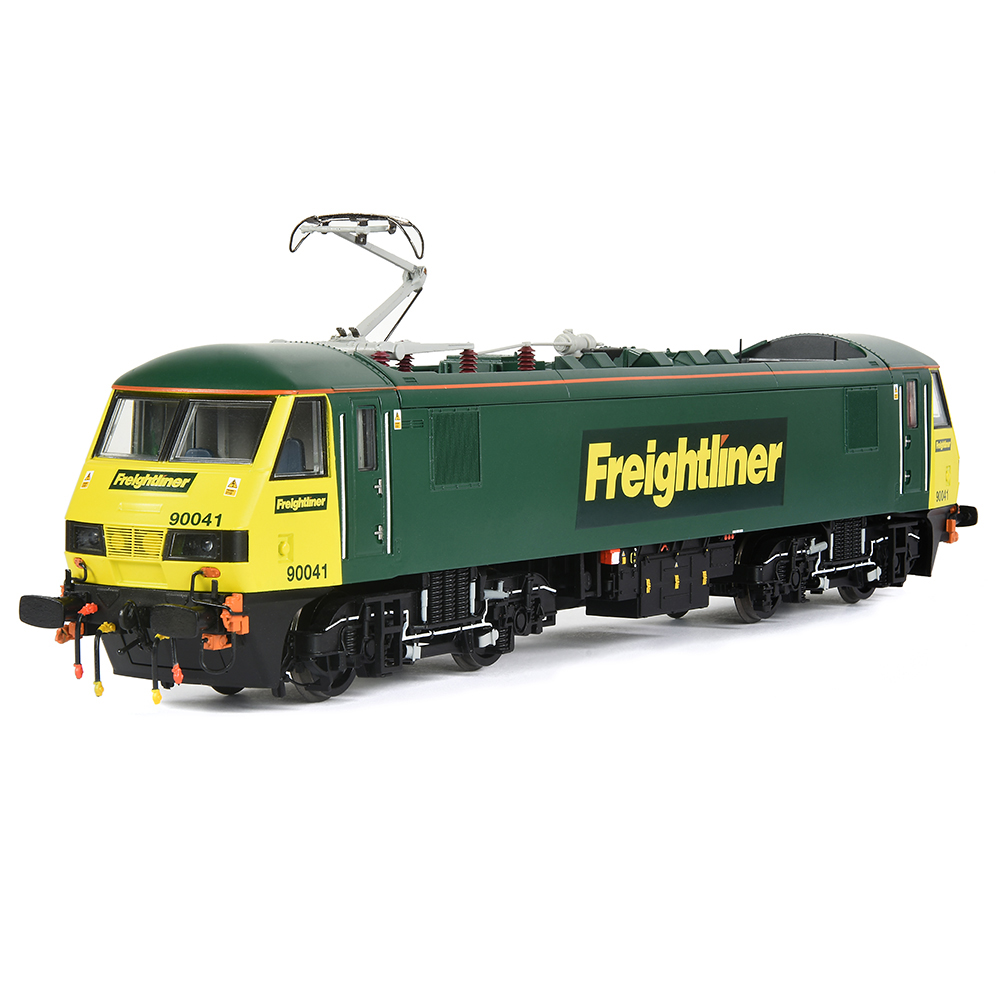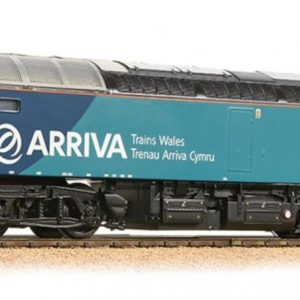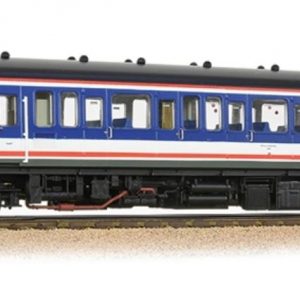Description
Fifty Class 90 locomotives were ordered by British Rail in 1986 to replace the ageing Class 85 fleet on West Coast Main Line duties, whilst also allowing BR to cascade a number of Class 86s to East Anglia. Constructed at British Rail Engineering Limited, Crewe, the new locomotives were initially classified as 87/2s however this was soon changed to Class 90 as the design featured a completely new body-shell – although much of the technology within was shared with the Class 87s.
Construction of the 110mph rated locomotives was completed in 1990 and the fleet was split between different sectors of British Rail – 15 were allocated to InterCity services, five for Rail Express Systems (mail and parcels traffic) and the remaining 30 for Railfreight Distribution. Most of those allocated to Railfreight Distribution would later be downgraded to 75mph and reclassified as 90/1s numbered in the 901xx series following work to isolate the Electric Train Heating and push-pull equipment making them dedicated freight locos.
Upon privatisation the Class 90 fleet was split between Virgin Trains, EWS and Freightliner. By 1999 all of the Class 90/1s acquired by EWS had been converted back to 90/0s due to an increased requirement for passenger locomotives to work contracted ScotRail sleeper trains and for hire to GNER for East Coast Main Line services. Further renumbering by EWS occurred when nine locos were fitted with different brake blocks and these became Class 90/2s numbered in the 902xx series. The Freightliner locos were also converted back to their original specification in the early 2000s.
The Class 90s have carried numerous liveries including three decorated in European liveries for the Freightconnection event in 1992 which coincided with the opening of the Channel Tunnel to freight services. No. 90128 was decorated in SNCB turquoise (Belgium), No. 90129 in DB red (Germany) and No. 90130 in SNCF orange and grey (France) and each carried the name Freightconnection in their respective languages, alongside No. 90022 which was named ‘Freightconnection’ and carried Railfreight Distribution livery.
The majority of the Class have carried names whilst in service and the 90s have appeared a variety of other post-Privatisation liveries such as GNER, DB Schenker, First ScotRail, One (Anglia), Greater Anglia, National Express, DRS and Malcolm Logistics. Today, Class 90s remain in operation with Freightliner, DB Cargo UK (ex-EWS/DB Schenker) and most recently Locomotive Services which has acquired Nos. 90001 and 90002 and repainted them into InterCity Swallow livery for use on charters and excursions.
MECHANISM:
Five pole, twin shaft motor with two flywheels providing drive to both bogies
All axle drive
Electrical pickup from all wheels
Separate metal bearings fitted to each axle
Diecast metal chassis block
Gearing arranged for prototypical running speeds and haulage capabilities
5mm (OO gauge) wheels to NEM310 & NEM311 standards with authentic profile and detailing
Close coupling mechanism fitted at each end, each of which is fitted with coupling pockets to NEM362 standards
Designed to operate on curves of second radius (438mm) or greater
DETAILING:
Metal Pantograph, sprung for posing in the up or down position, or can be raised/lowered via the built-in servo motor when operated on DCC
Bogies constructed from multiple components featuring full relief detail
Separately applied metal detail parts, including horn grilles, roof grilles, lamp irons and aerials
Sprung buffers
Each model supplied with a full set of decorated, model-specific bufferbeam pipework and accessory parts
LIGHTING:
Directional lighting, switchable on/off at either end on DCC or Analogue control
Day/Night Mode, selectable on DCC or Analogue control
Directional lights and Day/Night Mode selection is controlled via easy-access switches on the roof when operated on Analogue control
Cab lighting, switchable on/off (at the leading end, when used on DCC only)
Authentic light colours and temperatures selected for each model based on era and application
DCC:
21 Pin DCC decoder interface
Easy-access DCC decoder socket located underneath removable roof panel
SOUND:
Speaker installed in all models for optimum sound reproduction
LIVERY APPLICATION:
Authentic liveries applied to all models
Multiple paint applications employed on each model using BR/TOC specification colours
Logos, numerals and text added as appropriate using multi-stage tampo printing using authentic typefaces, logos and colours

